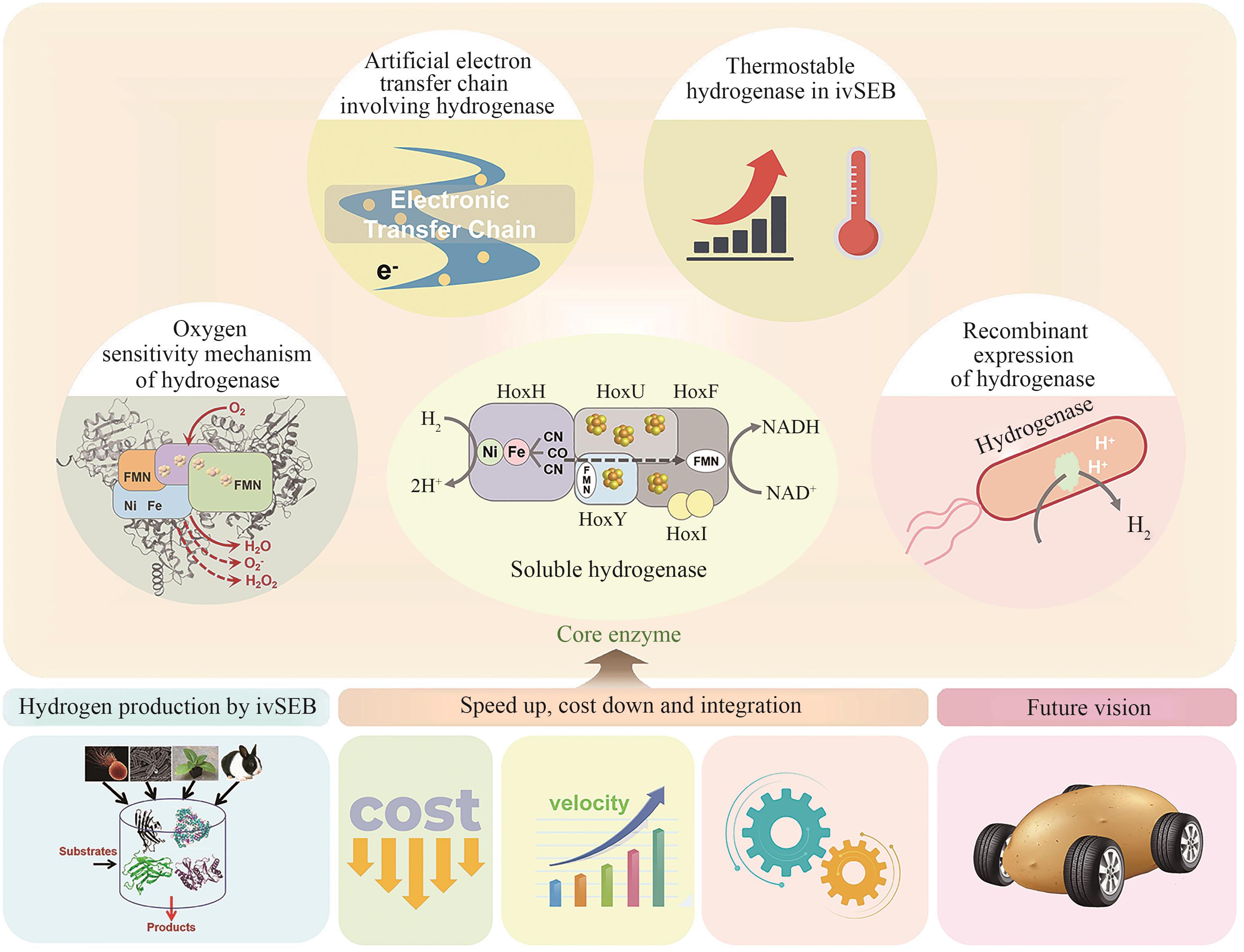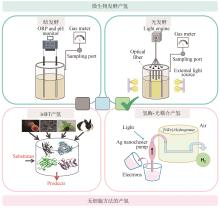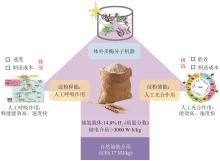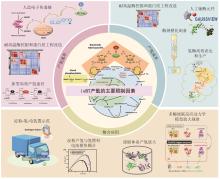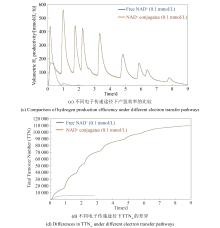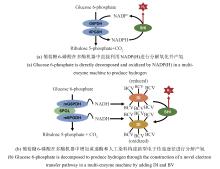|
||
|
Studies on hydrogenases for hydrogen production using in vitro synthetic enzymatic biosystems
Synthetic Biology Journal
2024, 5 (6):
1461-1484.
DOI: 10.12211/2096-8280.2024-052
Hydrogenases are the most important enzymes in biological hydrogen production and hydrogen energy utilization. They are widely distributed, oxygen-sensitive, multiunit complexed metal enzymes. In vitro synthetic enzymatic biosystems (ivSEB) is a type of in vitro biotransformation (ivBT) technology, which is an emerging biomanufacturing powerhouse that combines microbial fermentation with enzymatic biocatalysis, allowing for novel and efficient hydrogen production, also breaking the Thauer limit and achieving a yield of hydrogen close to the theoretical value of chemistry (1 mole of glucose to produce 12 moles of hydrogen in maximum). It represents the future direction of biological hydrogen production. However, the recombinant expression of hydrogenase is the main bottleneck limiting the wide application of ivSEB for hydrogen production technology. Hydrogenases are widely distributed in all life domains, but are oxygen-sensitive and mostly consist of metalloproteins with multi-subunits, bearing [Fe] only, [NiFe] or [FeFe] dinuclear core in their catalytic center. Oxygen not only inhibits the activity of hydrogenase, but also affects the transcription of the enzyme-encoding gene and post-translational process of the enzymes. As a result, the levels of recombinant hydrogenase are usually low and the enzymatic activities are also incomparable to the native enzymes, often leading to high production costs due to the strict anaerobic purification procedures. In order to meet the requirements of industrial hydrogen production, hydrogenases must possess excellent catalytic properties, such as a high catalytic turnover number, great thermal stability, and the ability to tolerate trace amounts of oxygen. This review summarizes the studies on the structural and catalytic characterizations of hydrogenases, including their classification, oxygen resistance mechanisms, and progress in recombinant expression. Additionally, the evolution of natural electron transfer chains and the design of artificial routes, which can improve hydrogen production efficiency and reduce costs, are briefly discussed. The review also discussed the progress in the studies on the mechanisms of hydrogenases’ tolerance toward oxygen, the strategies for microbial expression of recombinant hydrogenases as well as the optimization of the artificial electron transfer chains adapted for the production of hydrogen using ivSEB, in expectations of promoting the applications of hydrogenases involved ivSEB, from renewable energy storage, anaerobic artificial respiration, to clean hydrogenation or dehydrogenation in biocatalysis. 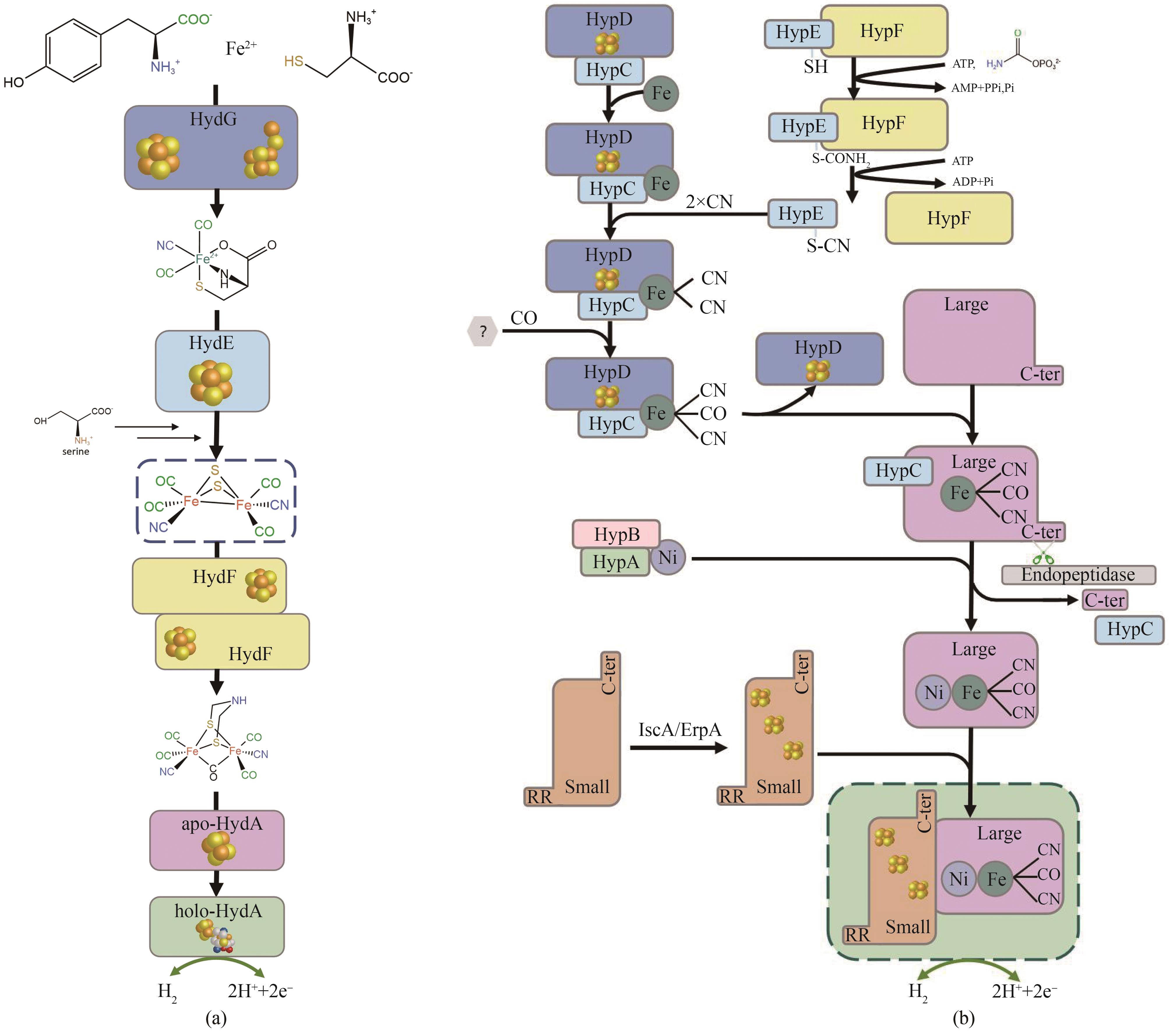
Fig. 2
Schematic of the maturation process of FeFe-hydrogenase (a) and schematic of the maturation process of NiFe-hydrogenase (b)
Extracts from the Article
[FeFe]和[NiFe]氢酶在翻译后成熟组装的过程中,催化亚基首先以无辅助金属离子或辅因子的形式合成(即apo-酶),随后通过专门的成熟机制获取所需的金属辅因子,最终形成具有催化活性的完整酶(即holo-酶),这一过程确保了酶的正确组装和催化活性的产生,对于酶的功能和活性至关重要(图2)。对于[FeFe]氢酶,其成熟机制包括三种不同的成熟酶(图2,HydE、HydF、HydG)参与。这些成熟酶的作用是帮助氢酶蛋白正确组装并获得所需的金属辅因子,从而形成具有催化活性的全酶。而[NiFe]氢酶则需要更多辅助蛋白来完成这些过程。除了需要辅助蛋白参与氢酶的全酶制备,氢酶的基础和应用研究也面临着其他诸多挑战,如氢酶对氧气十分敏感,易失活,导致活性氢酶的结构不易解析,而其产氢反应的电子传递机制尚不十分清晰,且效率有待提高,翻译后成熟过程也未完全阐明。尽管如此,近年来,氢酶的重组表达及其应用取得了很大的成果,部分氢酶或其亚基的结构解析也促进了模拟氢酶的化学催化剂的研究。对氢酶的诸多科学问题的进一步探索,必将有力地推动氢酶在氢经济发展中的应用。
Other Images/Table from this Article
|
